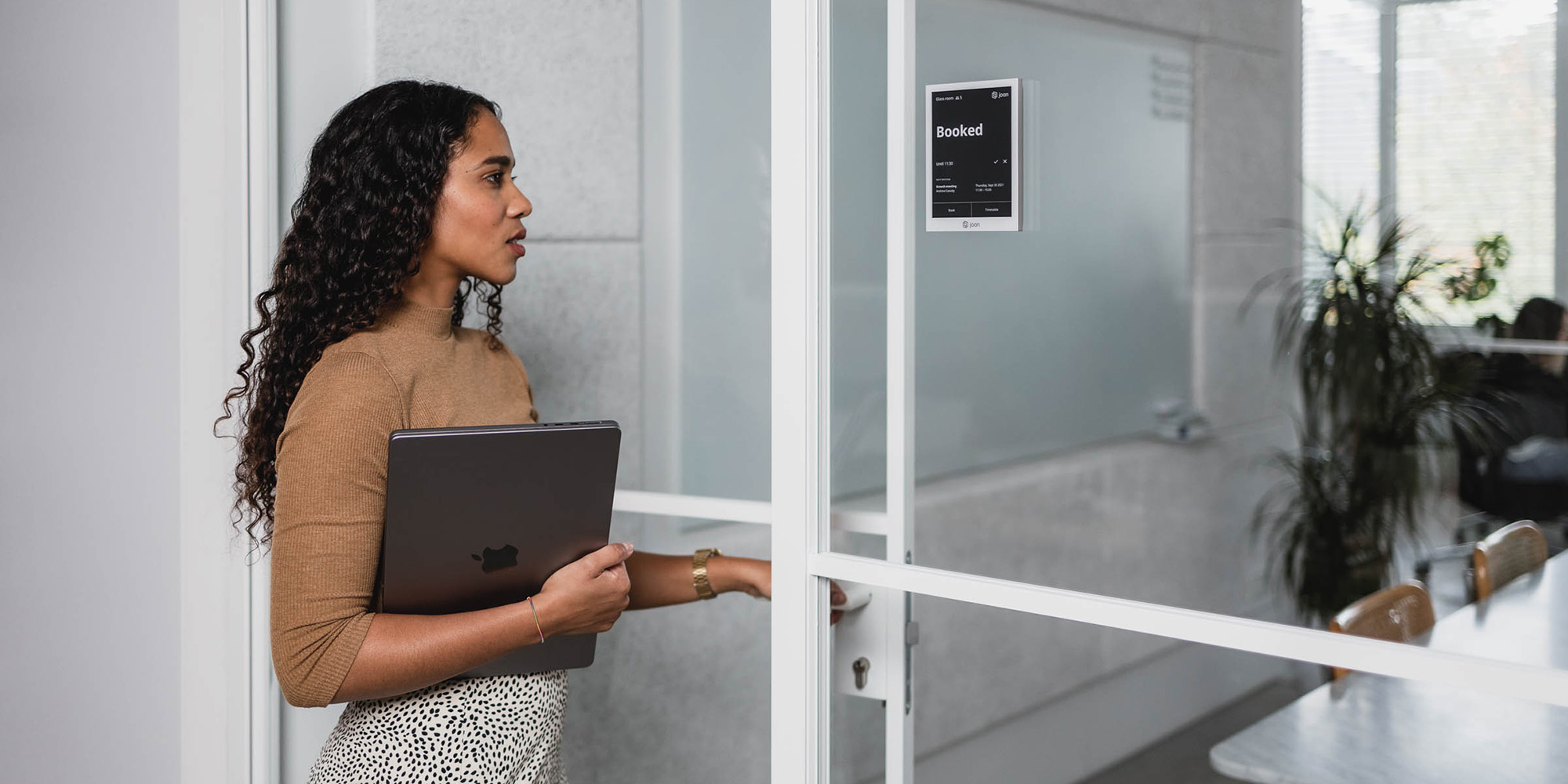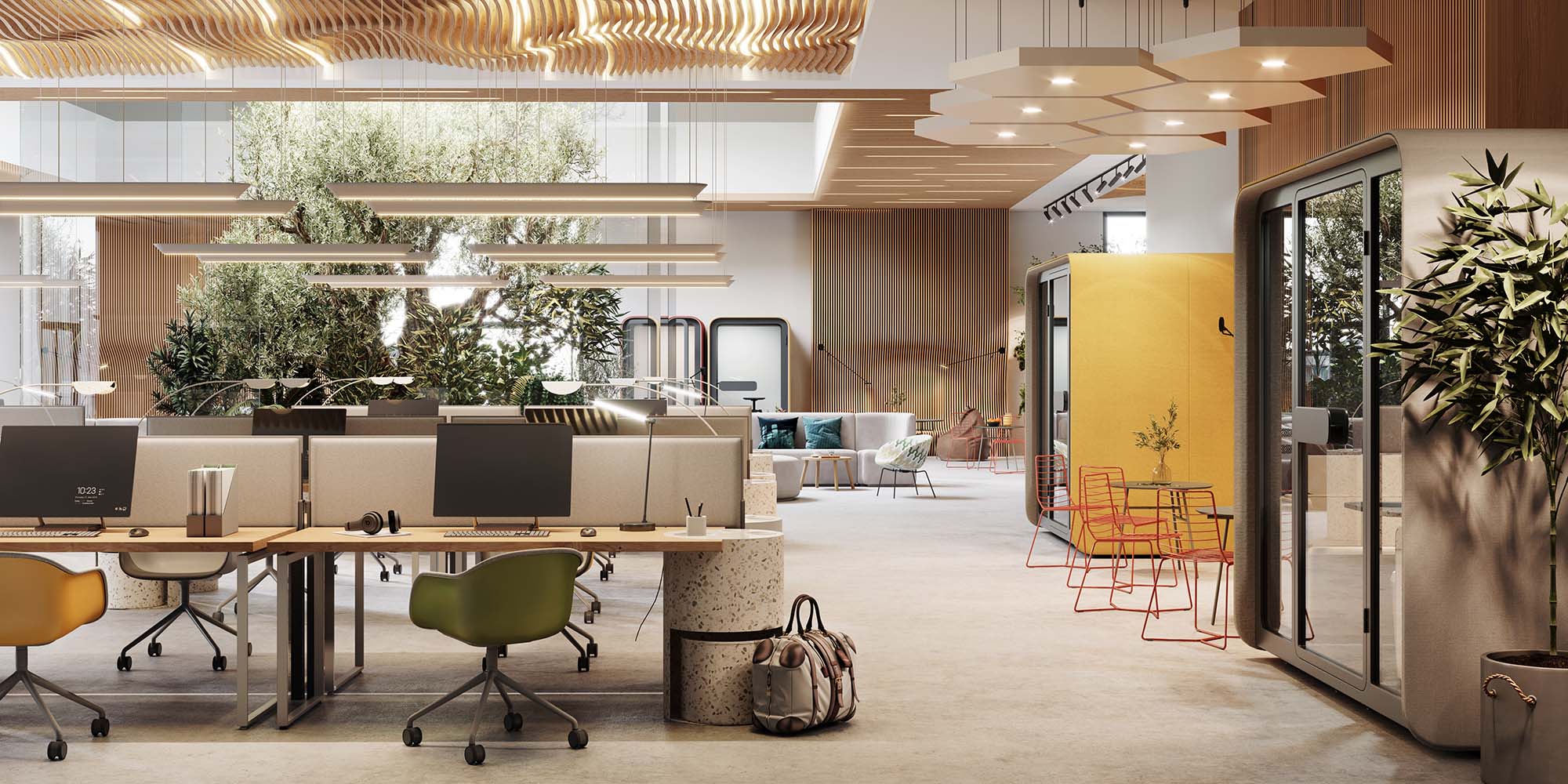It’s no secret that here at Joan, we enjoy writing about workspaces, tech, user-friendliness sustainability, and efficiency. Believe it or not, these topics were never chosen at random.
It all fits together under the same philosophy often applied when developing new products but can easily be extended to your workspace design.
It’s called Humane Design.
What is Humane Design?
Here’s what Humane Design is at its core:
It emphasizes user comfort, well-being, and satisfaction in interacting with products, services, and environments. The goal of humane design is to make daily life more manageable and less stressful through carefully designed user experiences.
This field, while relatively recent, builds upon the principles of human-centered design by integrating empathy and compassion into the design process (whether we’re talking about products or workspaces).
In workplace settings, for instance, humane design principles are applied to improve productivity and job satisfaction by creating spaces that are both enjoyable and conducive to work - tech that promotes collaboration in a friendly way, calm spaces to relax, dedicated meeting spaces to “get in the zone”, non-intrusive tech that easily manages workspaces instead of you (like, Joan, for example).
4 Humane Design Principles
This philosophy is anchored in four fundamental principles: focus, feedback, tolerance, and empathy.
The focus principle emphasizes that technology should enhance our concentration on essential tasks, not detract from them. For example, glaring LCD and LED screens in the office, easily grab our attention away from focused work or conversations. Epaper displays on the other hand, with their quiet design ensure you’re staying focused.
The feedback principle supports the idea that technology should provide timely and pertinent information, enabling us to make informed decisions. For example, Joan 6 Pro and Joan 6 RE ePaper displays sit in front of meeting rooms, showing only the essential information on the current meeting, upcoming meetings, and schedule. Without any unnecessary data clutter.
The tolerance principle suggests that technology should be prone to making errors, allowing users to recover without any serious consequences. For example, Joan Desk Booking and Asset Management solution makes it easy to edit any bookings without going through hoops.
Lastly, the empathy principle dictates that for technology to be genuinely humane, it must cater to the needs of all users, not just the technologically adept. It’s why our workplace management solution makes it easy to onboard everyone from day one. No matter the skill set, everyone can use our solutions without extensive training.
When these principles are implemented in product design and workspace, they create an intuitive user experience where technology seamlessly integrates into the background, allowing individuals to concentrate on what truly matters to them. This approach results in designs that are not only functional and user-friendly but also deeply considerate of values and well-being.

How does humane design differ from traditional user-centered design?
Humane design is a design philosophy centered on prioritizing needs and experiences. It demands that technology be empowering rather than overwhelming, extending beyond the traditional goals of user-centered design.
While user-centered design aims to make products easy to use, Humane Design elevates this by ensuring products and spaces are also enjoyable, and appealing, facilitating effortless achievement of users' objectives.

Implementing Humane Design in Workspaces
Adopting a humane design approach in workplace environments involves more than just aesthetic updates; it requires a fundamental rethinking of the workspace to prioritize an individual’s well-being.
For businesses looking to implement these principles, here are a few useful tips to get started:
- Involve employees in the design process. Gathering input through surveys, workshops, and feedback sessions can help understand the specific needs and preferences of your teams. This approach not only ensures that the workspace design reflects employee needs but also creates a sense of ownership and appreciation among the employees.
- Focus on creating flexible workspaces that can adapt to various tasks and working styles. This might include adjustable furniture, quiet zones for focused work, areas for collaboration, and private spaces for confidential discussions or relaxation. By providing a range of options, employees can choose the environment that best suits their current activity.
- Integrate biophilic design elements that connect the indoors with the natural environment. This can include installing living green walls and incorporating plant displays. These features not only enhance aesthetic appeal but also contribute to reduced stress levels and improved mental health.
- Consider the universal design to ensure inclusivity. This means selecting furniture, layouts, and technologies that are accessible to people of all abilities. For instance, ensuring that all areas are wheelchair accessible and that technology accommodates those with visual or auditory impairments can make a significant difference.
By adopting these strategies, businesses can create workspaces that truly reflect Humane Design principles, leading to more engaged, productive, and happy employees.

It’s time to take a step towards more friendly workspaces
Humane Design isn't just a trend; it's a necessary shift toward more sustainable, enjoyable, and productive work environments. By focusing on empathy, tolerance, feedback, and focus, we can transform typical office settings into spaces that foster creativity, collaboration, and overall employee satisfaction.
Here at Joan, our commitment to these principles is evident not just in our solutions but in how we envision the future of workspaces. Our technology, like the Joan 6 Pro and Joan 6 RE ePaper displays, is designed to integrate seamlessly into your work environment, providing essential information without distraction and supporting your team's best work through intuitive, user-friendly solutions. Our workplace management app promotes connections between employees and gives complete control and ownership over their workday.
To learn more about humane design and stay updated with the latest in workspace solutions, get on our mailing list crafted for workplace leaders of the future
Insights that keep your office running smoothly
Fresh content on productivity, space management, and the future of work. Perfect for managers, admins, and busy teams.
Join thousands of workplace professionals who already read the Joan blog. Unsubscribe anytime.
